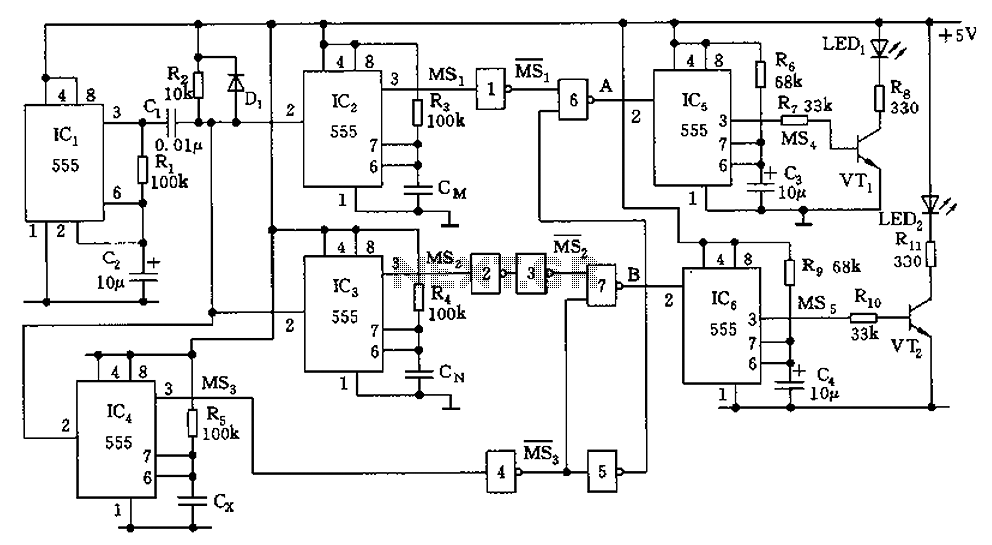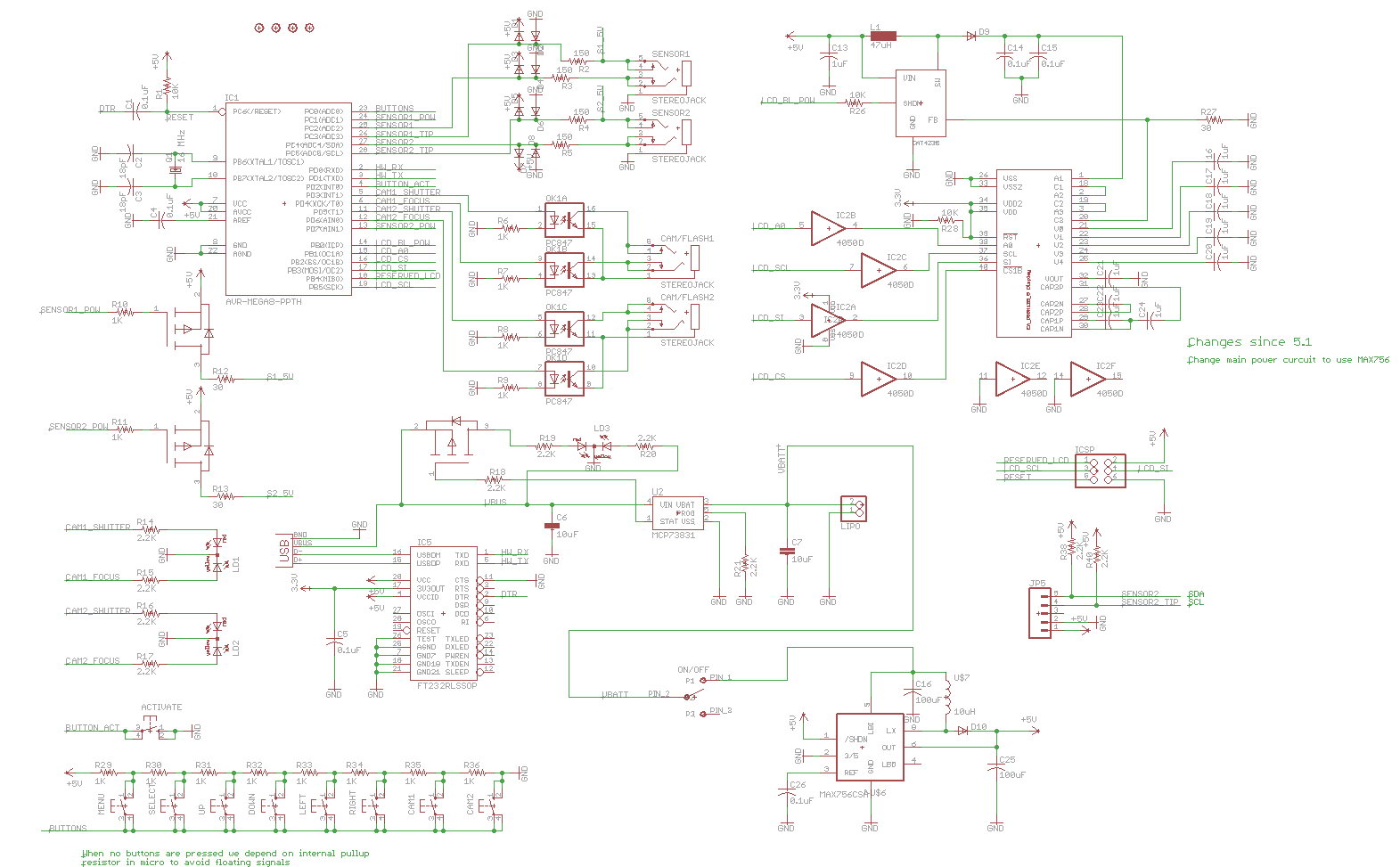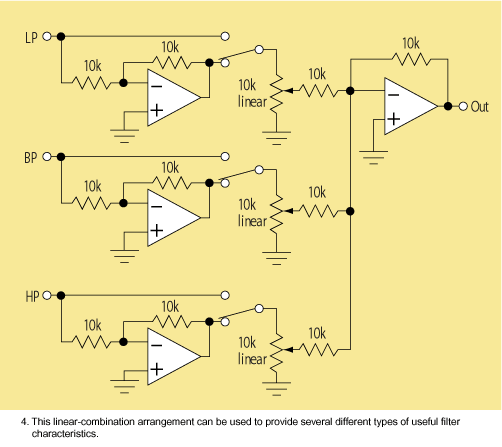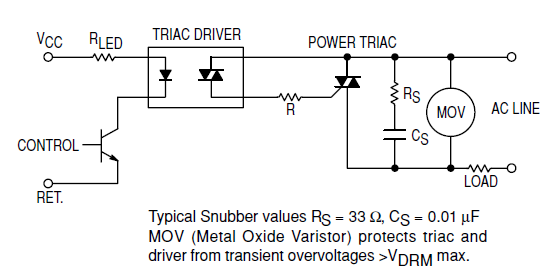
HQ Notch Filter Without Close-Tolerance components
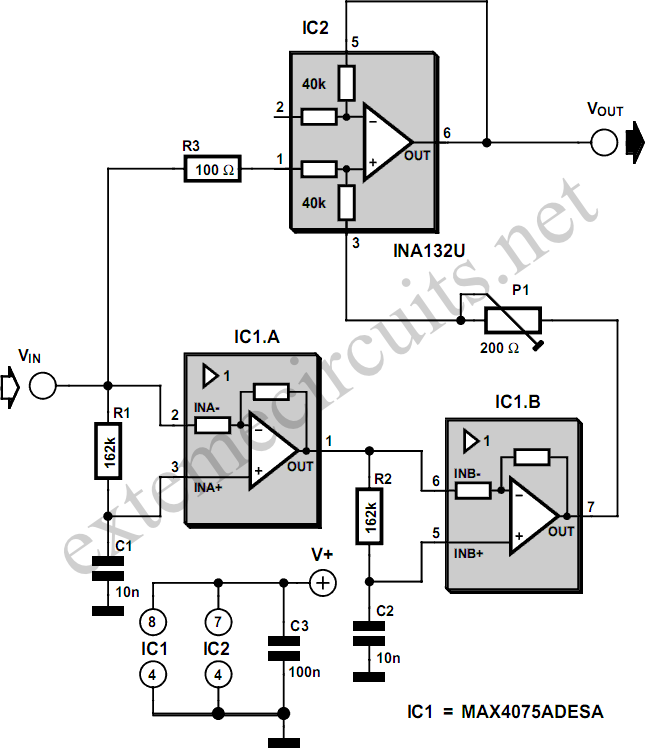
A notch filter designed for a narrow frequency band of a few percent or less typically requires close-tolerance components. This assumption was challenged upon discovering a specialized operational amplifier integrated circuit (IC) from Maxim. In filters with steep slopes, component tolerances interact within the complex frequency response, making standard tolerance components inadequate for achieving useful results. The circuit presented here shifts the responsibility of value-sensitive resistors, which determine the filter response, from visible resistors to readily available integrated circuits, simplifying the PCB layout for the filter. The operational amplifiers utilized feature laser-trimmed resistors that maintain their nominal values within 1% or less. This approach is significantly more cost-effective and less time-consuming than matching individual precision resistors. The desired notch (rejection) frequency can be easily calculated for both resistor-capacitor (R-C) sections shown in the accompanying figure. The circuit separates amplitude and frequency domains using two frequency-determining R-C networks and two level-determining feedback networks of summing amplifier IC2, which suppresses the frequency component to be eliminated from the input signal through simple phase shifting. IC1 comprises two operational amplifiers complete with a feedback network. The MAX4075 is available in a variety of gain specifications, ranging from 0.25 V/V to 100 V/V, or +1.25 V/V to 101 V/V when configured in a non-inverting manner. The suffix AD indicates that the inverting version is employed here (G = 1). These ICs function as all-pass filters, producing a phase shift of exactly 180 degrees at the roll-off frequency f0. The integrated amplifier resistors introduce a gain variation of less than 0.1% and are responsible for the signal level at the notch frequency, which is added to the input signal by IC2 through a summing operation. However, they do not influence the notch frequency itself; that is determined by the two external R-C sections, which, in turn, do not affect the degree of signal suppression. Generally, surface mount devices (SMDs) exhibit smaller production tolerances compared to their leaded counterparts. Given that the two ICs in this circuit are only available in an 8-pin SOIC package, it is logical to utilize SMDs throughout the rest of the circuit. Preset P1 allows for adjustment of the filter to achieve maximum rejection of the unwanted frequency component. By employing standard-tolerance resistors for R1 and R2 (1%, 0806 style) and 10%-tolerance capacitors for C1 and C2 (X7R ceramic), a rejection level better than that illustrated in the accompanying figure may be attained. The notch frequency can be defined more accurately through the use of selected R-C sections. Pin 3 of IC2 receives a signal that has undergone a 90-degree phase shift twice at the notch frequency, while pin 1 is supplied with the input signal. These two signals are combined via the two on-chip resistors. IC2 functions as a differential precision operational amplifier, containing precision resistor networks trimmed to an error not exceeding ±0.2%. It is configured as a modified summing amplifier with its inverting input, pin 2, left open. For frequencies significantly lower than the resonance frequency f0 = 1 / (2 R C), the capacitors present high impedance, preventing the inverting voltage followers from phase-shifting the signal. At frequencies higher than f0, each inverting voltage follower shifts its input signal by 180 degrees, resulting in a total shift of 360 degrees, which electrically equates to 0 degrees. The phases of each all-pass filter behave like a simple R-C pole, shifting the signal at the resonance frequency by 90 degrees each. The three precision amplifier ICs can process signals up to 100 kHz with remarkably low distortion. The supply voltage can range from 2.7 V to 5.5 V, with a current consumption of approximately 250 µA.
The operational amplifier circuit described serves as a highly efficient notch filter, effectively eliminating unwanted frequency components while maintaining signal integrity. The use of precision laser-trimmed resistors within the MAX4075 IC ensures minimal gain variation, which is critical for applications requiring high fidelity. The design's reliance on integrated circuits rather than discrete components not only simplifies the layout but also enhances reliability and reduces susceptibility to component tolerances. The dual R-C networks facilitate precise control over the notch frequency, allowing for easy adjustments to achieve optimal performance. The implementation of surface mount technology further contributes to the compactness and efficiency of the design, making it suitable for modern electronic applications where space and performance are paramount. This circuit is particularly advantageous in audio processing, communications, and other fields where specific frequency components must be suppressed without affecting the overall signal quality.A notch for a narrow frequency band of a few per cent or even less normally requires close-tolerance components. At least, that`s what we thought until we came across a special opamp IC from Maxim. In filters with steep slopes, the component tolerances will interact in the complex frequency response.
This effect rules out the use of standard toler ance components if any useful result is to be achieved. The circuit shown here relocates the issue of the value-sensitive resistors that determine the filter response from visible` resistors to ready available integrated circuits which also make the PCB layout for thelter much simpler. The operational amplifiers we`ve in mind contain laser-trimmed resistors that maintain their nominal value within 1 ° or less.
For the same accuracy, the effort that goes into matching individual precision resistors would be far more costly and time consuming. The desired notch (rejection) frequency is easily calculated for both R-C sections shown in Figure 1.
The circuit separates the amplitude and frequency domains using two frequency-determining R-C networks and two level-determining feedback networks of summing amplifier IC2, which suppresses the frequency component to be eliminated from the input signal by simple phase shifting. IC1 contains two operational amplifiers complete with a feedback network. The MAX4075 is available in no fewer than 54 different gain specifications ranging from 0. 25 V/V to 100 V/V, or +1. 25 V/V to 101 V/V when non-inverting. The suffix AD indicates that we are employing the inverting version here (G = 1). These ICs operate as all-pass filters producing a phase shift of exactly 180 degrees at the roll-off frequency f0.
The integrated amplifier resistors can be trusted to introduce a gain variation of less than 0. 1 %. They are responsible for the signal level (at the notch frequency) which is added to the input signal by IC2 by a summing operation. However, they do not affect the notch frequency proper ” that is the domain of the two external R-C sections which, in turn, do not affect the degree of signal suppression.
In general, SMDs (surface mount devices) have smaller production tolerance than their leaded counter-parts. Because the two ICs in this circuit are only available in an 8-pin SOIC enclosure anyway, it seems logical to employ SMDs in the rest of the circuit as well.
Preset P1 allows thelter to be adjusted for maximum rejection of the unwanted frequency component. Using standard-tolerance resistors for R1 and R2 (i. e. , 1%, 0806 style) and 10%-tolerance capacitors for C1 and C2 (X7R ceramic) an amount of rejection better than that shown in Figure 2 may be achieved. The notch frequency proper may be defined more accurately by the use of selected R-C sections. Pin 3 of IC2 receives a signal that`s been 90-degrees phase shifted twice at the notch frequency, while pin 1 is fed with the input signal.
These two signals are added by way of the two on-chip resistors. IC2 is a differential precision operational amplifier containing precision resistor networks trimmed to an error not exceeding ±0. 2 °. Here, it is configured as a modified summing amplifier with its inverting input, pin 2, left open. For frequencies considerably lower than the resonance frequency f0 = 1 / (2 R C) the capacitors present a high impedance, preventing the inverting voltage followers from phase-shifting the signal.
At higher frequencies than f0, each inverting voltage follower shifts its input signal by 180 degrees, producing a total shift of 360 degrees which (electrically) equals 0 degrees. The phases of each all-passlter behave like a simple R-C pole, hence shift the signal at the resonance frequency by 90 degrees each.
The three precision amplifier ICs can handle signals up to 100 kHz at remarkably low distortion. The supply voltage may be anything between 2. 7 V and 5. 5V. Current consumption will be of the order of 250 µA. 🔗 External reference
The operational amplifier circuit described serves as a highly efficient notch filter, effectively eliminating unwanted frequency components while maintaining signal integrity. The use of precision laser-trimmed resistors within the MAX4075 IC ensures minimal gain variation, which is critical for applications requiring high fidelity. The design's reliance on integrated circuits rather than discrete components not only simplifies the layout but also enhances reliability and reduces susceptibility to component tolerances. The dual R-C networks facilitate precise control over the notch frequency, allowing for easy adjustments to achieve optimal performance. The implementation of surface mount technology further contributes to the compactness and efficiency of the design, making it suitable for modern electronic applications where space and performance are paramount. This circuit is particularly advantageous in audio processing, communications, and other fields where specific frequency components must be suppressed without affecting the overall signal quality.A notch for a narrow frequency band of a few per cent or even less normally requires close-tolerance components. At least, that`s what we thought until we came across a special opamp IC from Maxim. In filters with steep slopes, the component tolerances will interact in the complex frequency response.
This effect rules out the use of standard toler ance components if any useful result is to be achieved. The circuit shown here relocates the issue of the value-sensitive resistors that determine the filter response from visible` resistors to ready available integrated circuits which also make the PCB layout for thelter much simpler. The operational amplifiers we`ve in mind contain laser-trimmed resistors that maintain their nominal value within 1 ° or less.
For the same accuracy, the effort that goes into matching individual precision resistors would be far more costly and time consuming. The desired notch (rejection) frequency is easily calculated for both R-C sections shown in Figure 1.
The circuit separates the amplitude and frequency domains using two frequency-determining R-C networks and two level-determining feedback networks of summing amplifier IC2, which suppresses the frequency component to be eliminated from the input signal by simple phase shifting. IC1 contains two operational amplifiers complete with a feedback network. The MAX4075 is available in no fewer than 54 different gain specifications ranging from 0. 25 V/V to 100 V/V, or +1. 25 V/V to 101 V/V when non-inverting. The suffix AD indicates that we are employing the inverting version here (G = 1). These ICs operate as all-pass filters producing a phase shift of exactly 180 degrees at the roll-off frequency f0.
The integrated amplifier resistors can be trusted to introduce a gain variation of less than 0. 1 %. They are responsible for the signal level (at the notch frequency) which is added to the input signal by IC2 by a summing operation. However, they do not affect the notch frequency proper ” that is the domain of the two external R-C sections which, in turn, do not affect the degree of signal suppression.
In general, SMDs (surface mount devices) have smaller production tolerance than their leaded counter-parts. Because the two ICs in this circuit are only available in an 8-pin SOIC enclosure anyway, it seems logical to employ SMDs in the rest of the circuit as well.
Preset P1 allows thelter to be adjusted for maximum rejection of the unwanted frequency component. Using standard-tolerance resistors for R1 and R2 (i. e. , 1%, 0806 style) and 10%-tolerance capacitors for C1 and C2 (X7R ceramic) an amount of rejection better than that shown in Figure 2 may be achieved. The notch frequency proper may be defined more accurately by the use of selected R-C sections. Pin 3 of IC2 receives a signal that`s been 90-degrees phase shifted twice at the notch frequency, while pin 1 is fed with the input signal.
These two signals are added by way of the two on-chip resistors. IC2 is a differential precision operational amplifier containing precision resistor networks trimmed to an error not exceeding ±0. 2 °. Here, it is configured as a modified summing amplifier with its inverting input, pin 2, left open. For frequencies considerably lower than the resonance frequency f0 = 1 / (2 R C) the capacitors present a high impedance, preventing the inverting voltage followers from phase-shifting the signal.
At higher frequencies than f0, each inverting voltage follower shifts its input signal by 180 degrees, producing a total shift of 360 degrees which (electrically) equals 0 degrees. The phases of each all-passlter behave like a simple R-C pole, hence shift the signal at the resonance frequency by 90 degrees each.
The three precision amplifier ICs can handle signals up to 100 kHz at remarkably low distortion. The supply voltage may be anything between 2. 7 V and 5. 5V. Current consumption will be of the order of 250 µA. 🔗 External reference
